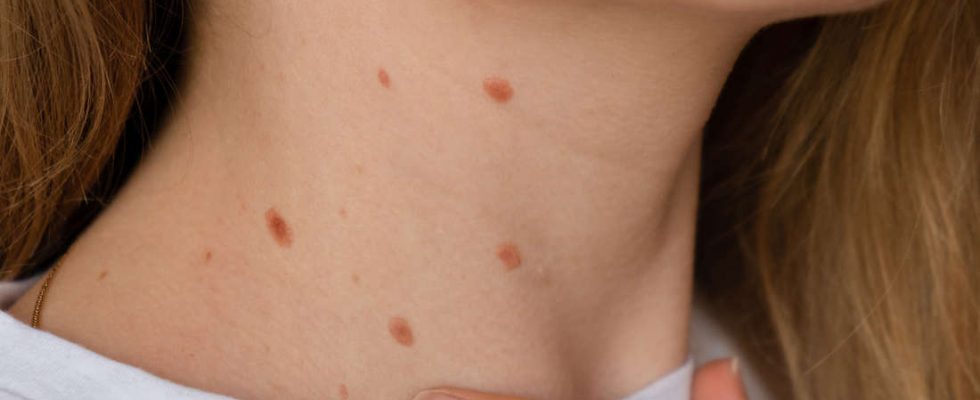If your skin mole changes in size, color or shape, you should see a doctor – especially if there is a history of cancer in the family.
“There is no such thing as ‘good’ ultraviolet (UV) radiation: any type of UV light can be harmful – regardless of the source.” This is what an information sheet from the German Cancer Research Center (DKFZ), which has made it its mission to educate people about the risks of skin cancer. Because in Germany and worldwide, skin cancer is now counted alongside breast cancer, prostate cancer, Colon cancer and Lung cancer among the most frequently diagnosed cancers. Doctors not only find a clear connection between the frequency of skin cancer and longer stays in the sun. The introduction of skin cancer screening in 2008 means that more cases – including early stages and precancerous stages of skin cancer – are detected earlier and better.
In order to minimize the risk of serious skin cancer, it is recommended to have regular check-ups with a dermatologist. At the same time, people should regularly check their skin themselves using the ABCDE check, especially if there are many moles. At specific signs or symptoms see a doctor as soon as possible.
Detecting and preventing skin cancer early: What should you pay attention to when checking yourself?
Skin cancer and its precursors can usually be detected through visual and tactile examinations. It is therefore important to notice early on through regular self-examinations where new skin changes appear or existing moles grow. The German Cancer Society (DKG) We strongly recommend using daylight when checking yourself so that you can better see the skin and moles. A mirror can also be helpful. This means that moles can be checked even in areas of the skin that are difficult to access or see.
TIP
For the ABCDE self-check, pay particular attention to changes in the arms, legs, between the fingers, toes, the soles of the feet and on the scalp. Your partner or a relative may also be able to check the hard-to-reach areas of the skin.
Special attention should also be paid to pigmented moles, also known as moles or moles. Although these are harmless in most cases, there is a possibility that they may develop into a malignant tumor – that is, a black malignant melanoma Skin cancer – developed.
It could be skin cancer if…
… an existing mole changes its size, color or shape.
…a skin mole starts to itch or bleed.
Source: German Cancer Society (DKG)
Detecting or preventing skin cancer early: Skin screening can ultimately save lives
Those insured by statutory health insurance companies are entitled to a skin screening every two years for the early detection of skin cancer from the age of 35. The costs of the examination will then be covered. The aim of screening is to detect the three main forms of skin cancer – malignant melanoma, basal cell carcinoma and squamous cell carcinoma – as early as possible in order to prevent precancerous skin cancer and improve the prognosis. Skin cancer screening serves as an important supplement to self-examination. In fact, skin cancer screening can detect more potential skin abnormalities, which are often in an early stage at the time of diagnosis – the prognosis is therefore often better and the chance of a cure increases.
Skin cancer screening: what is involved?
The examination usually takes around ten to 20 minutes. In an anamnesis interview, the dermatologist asks the patient about personal risk factors and possible skin cancer in the family after getting an idea of skin types I to VI (light to dark skin type). The entire skin including the scalp and all visible mucous membranes including the nails are then examined.
Skin cancer can also develop under the nails
Before the screening, dark nail polish should be removed from fingernails and toenails, as skin cancer can also develop under the nails in rare cases. Body jewelry such as ear studs or piercings can also make it difficult to see small changes. Avoid wearing any covering make-up during the examination.
If the doctor detects any abnormalities during the examination with the dermatoscope, he will record them, note them down and, if necessary, in a second step, submit a skin sample to the laboratory for closer inspection in a small surgical procedure. Basically, you should report any irregularities in your skin or a change in a mole to your doctor immediately.
This article only contains general information on the respective health topic and is therefore not intended for self-diagnosis, treatment or medication. It in no way replaces a visit to the doctor. Our editorial team is not allowed to answer individual questions about medical conditions.

